Abstract
Quantified in the study are the extent of missed opportunities for immunization and the potential increases in vaccination coverage and timeliness that could be achieved by using all health centre visits to administer childhood vaccinations in the Central African Republic. The data were collected during a national vaccination coverage survey of 642 children aged 12-23 months from three areas: rural, urban, and the capital, Bangui. Dates of all vaccination visits and other health centre visits were obtained from combined vaccination/health cards. Nationwide, 70% of all opportunities for valid measles vaccination were missed. Of these, 28% occurred at visits when at least one vaccine was given, while 72% occurred at other health centre visits. If there had been no missed opportunities to administer all vaccinations due when at least one vaccine was given, the coverage would have increased from 53% to 67% for the diphtheria-pertussis-tetanus series, from 54% to 70% for measles, and from 34% to 59% for all antigens. If there had been no missed opportunities at any visit, the corresponding increases would have been to 70%, 76%, and 65%. For measles, 46% of the potential increase depends on recognizing that an earlier dose of the vaccine was invalid and on revaccinating. Days-at-risk for measles (after the age of 270 days) would have been reduced by a mean of 74 days per subject with a health card had no opportunities been missed. The method used serves as a valuable adjunct to evaluations of missed opportunities based on exit interviews at health facilities.(ABSTRACT TRUNCATED AT 250 WORDS)
Full text
PDF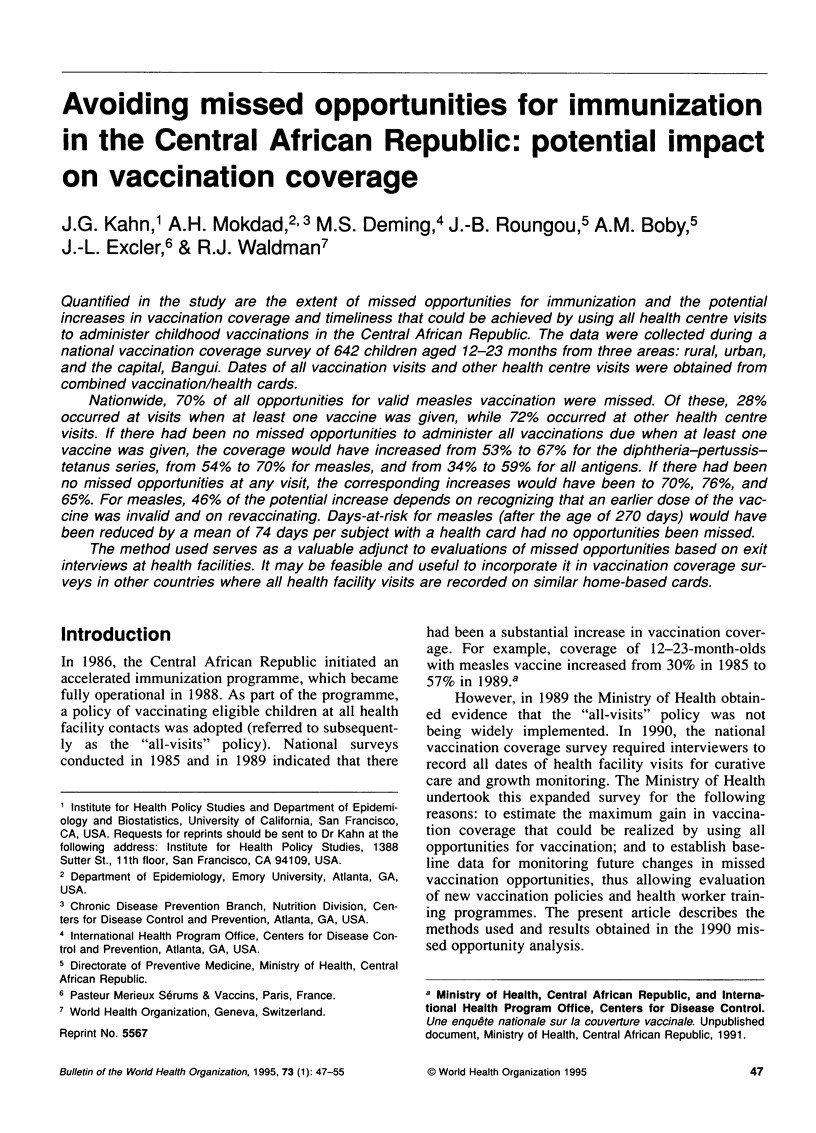
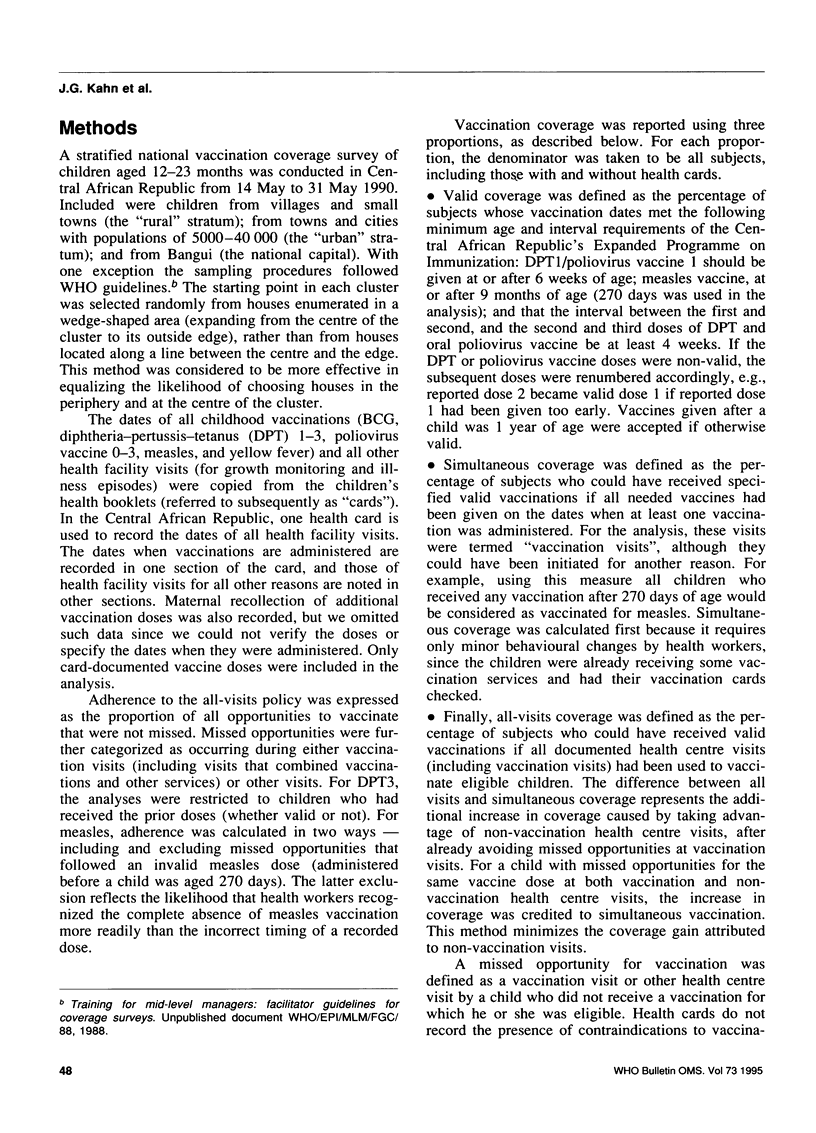
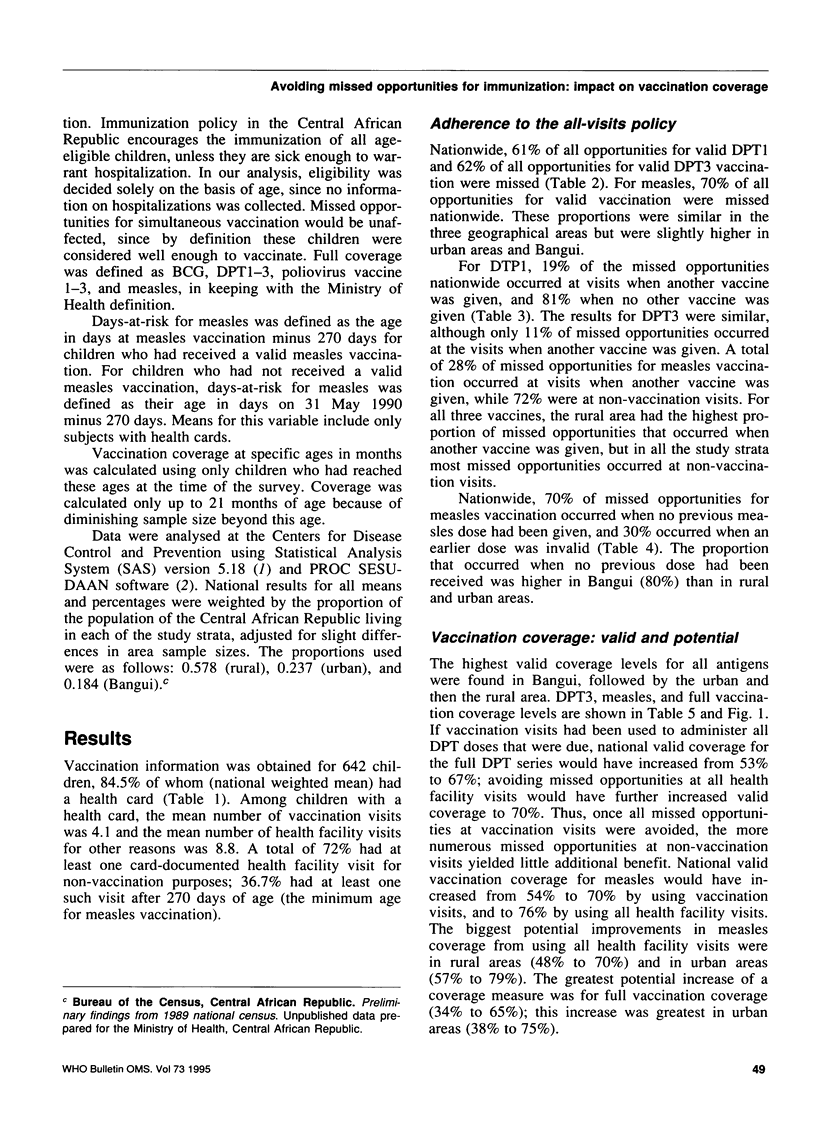
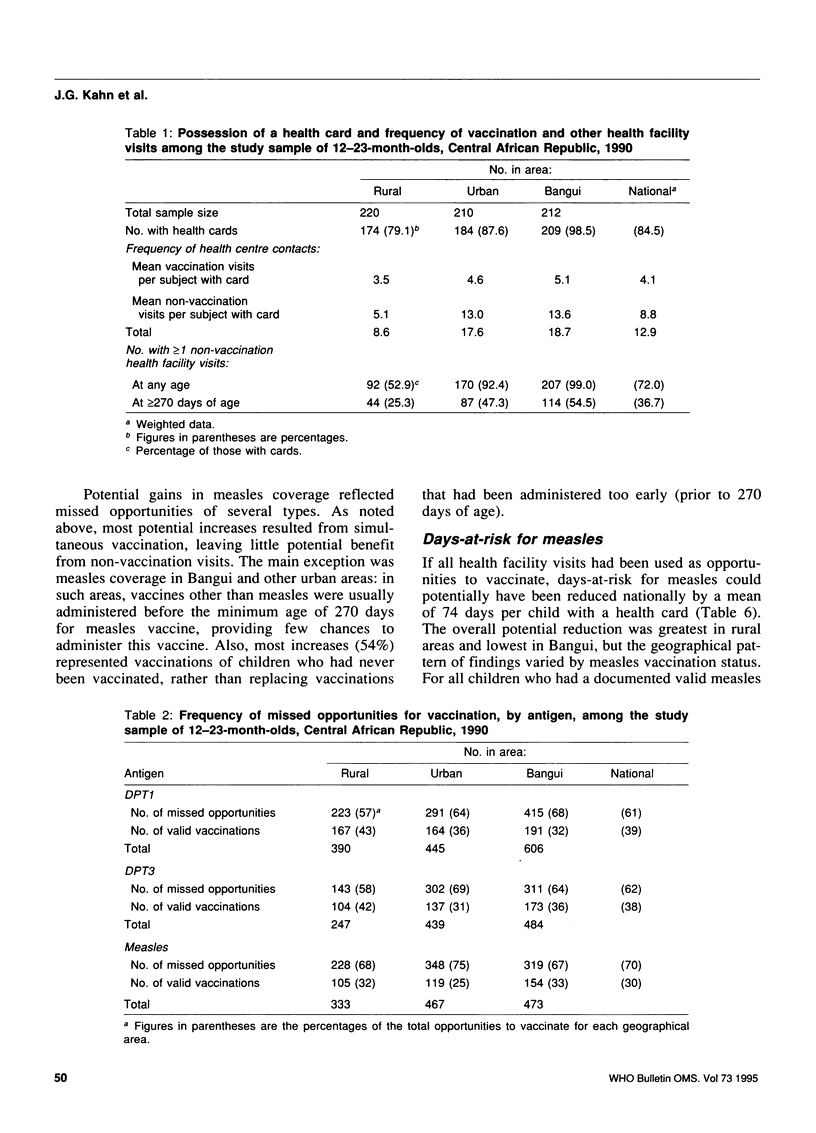
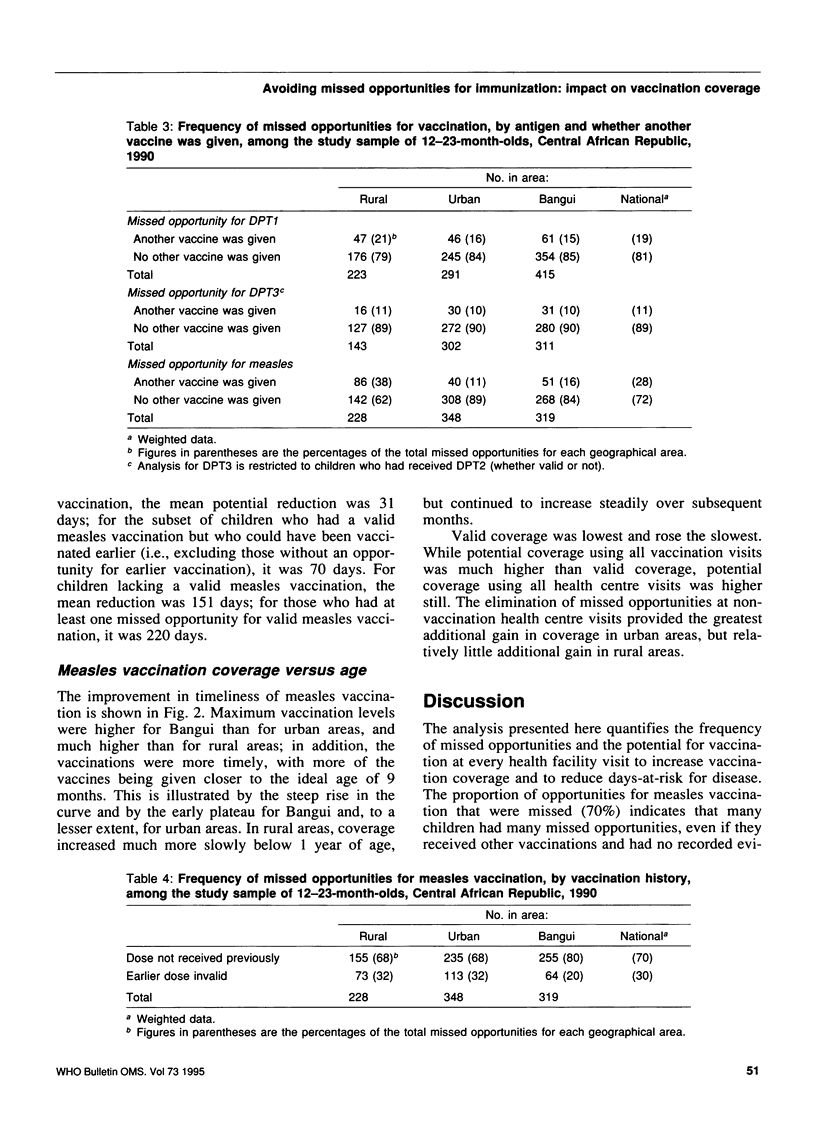
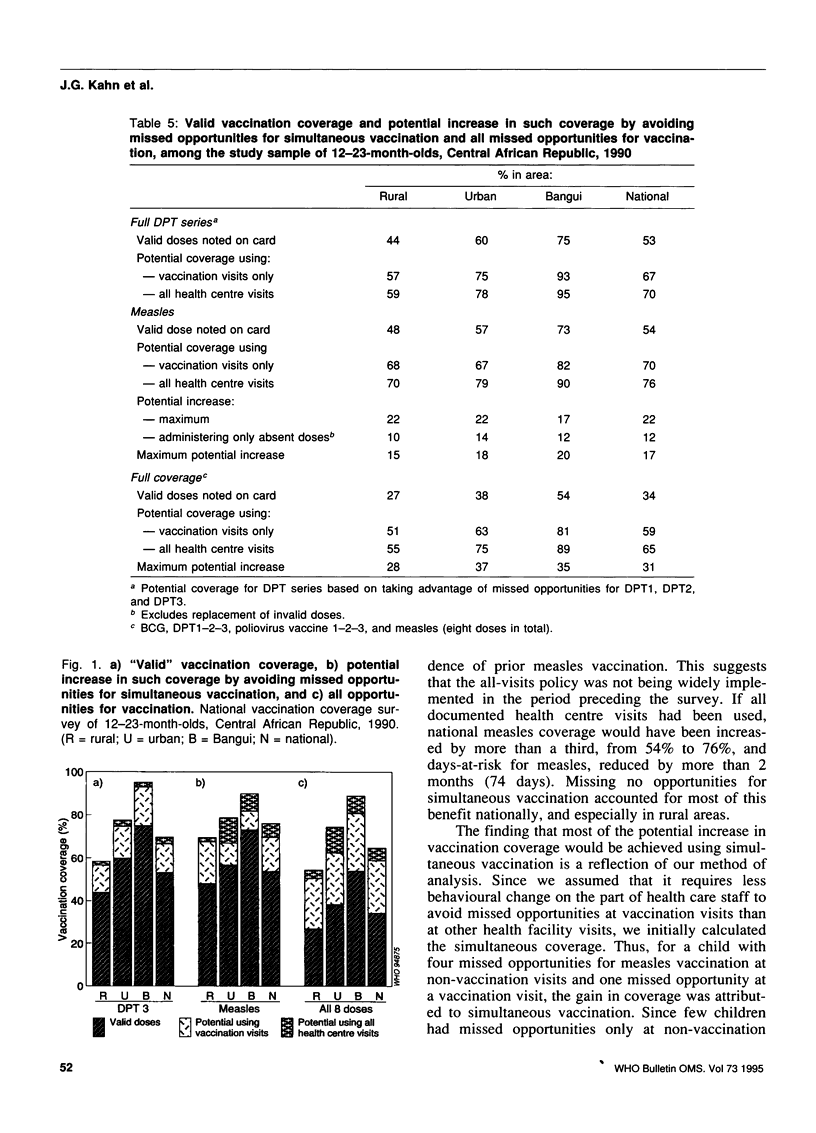
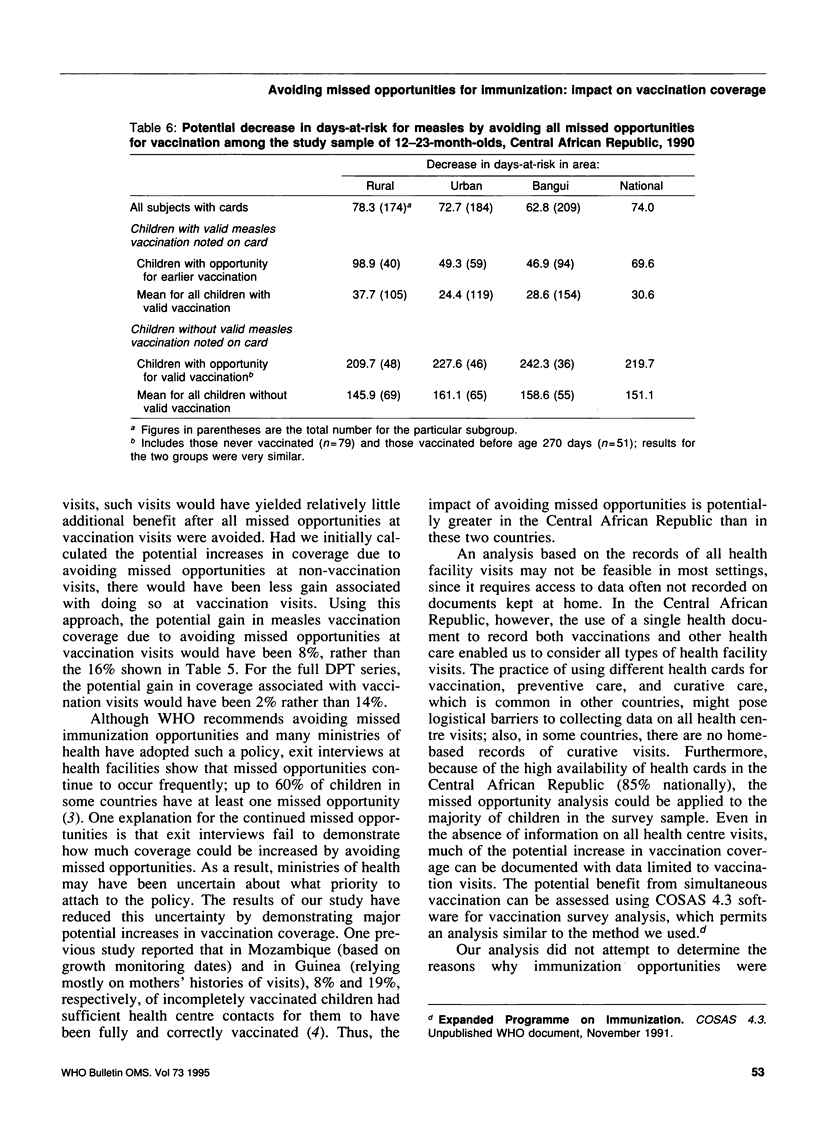
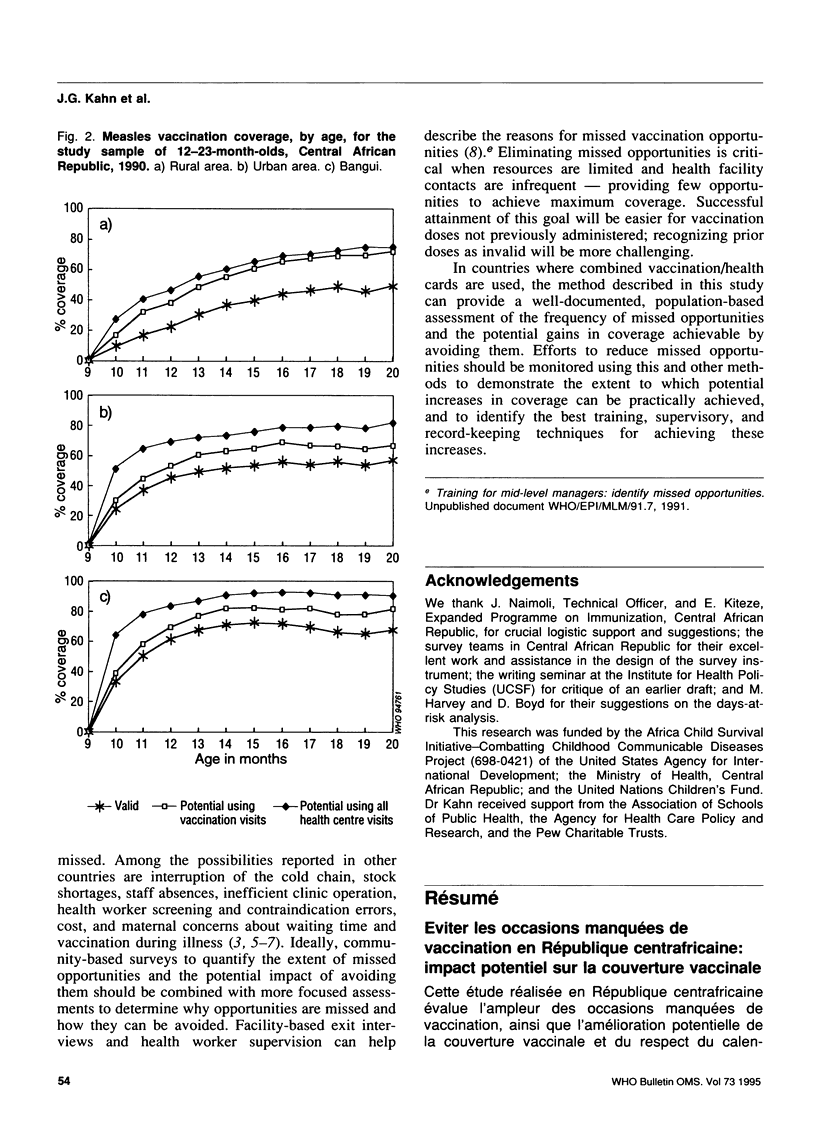
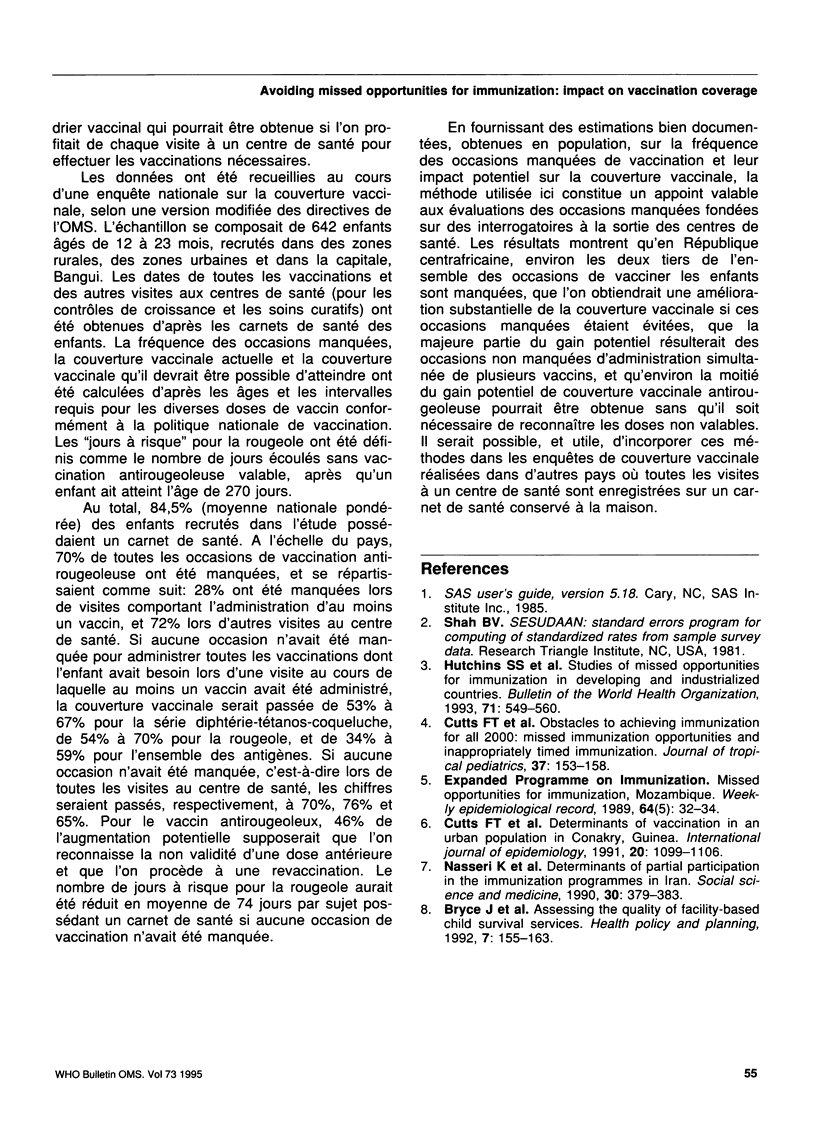
Selected References
These references are in PubMed. This may not be the complete list of references from this article.
- Cutts F. T., Diallo S., Zell E. R., Rhodes P. Determinants of vaccination in an urban population in Conakry, Guinea. Int J Epidemiol. 1991 Dec;20(4):1099–1106. doi: 10.1093/ije/20.4.1099. [DOI] [PubMed] [Google Scholar]
- Cutts F. T., Zell E. R., Soares A. C., Diallo S. Obstacles to achieving immunization for all 2000: missed immunization opportunities and inappropriately timed immunization. J Trop Pediatr. 1991 Aug;37(4):153–158. doi: 10.1093/tropej/37.4.153. [DOI] [PubMed] [Google Scholar]
- Hutchins S. S., Jansen H. A., Robertson S. E., Evans P., Kim-Farley R. J. Studies of missed opportunities for immunization in developing and industrialized countries. Bull World Health Organ. 1993;71(5):549–560. [PMC free article] [PubMed] [Google Scholar]
- Nasseri K., Latifi M., Azordegan F., Shafii F., All-e-Agha R. Determinants of partial participation in the immunization programmes in Iran. Soc Sci Med. 1990;30(3):379–383. doi: 10.1016/0277-9536(90)90193-v. [DOI] [PubMed] [Google Scholar]


